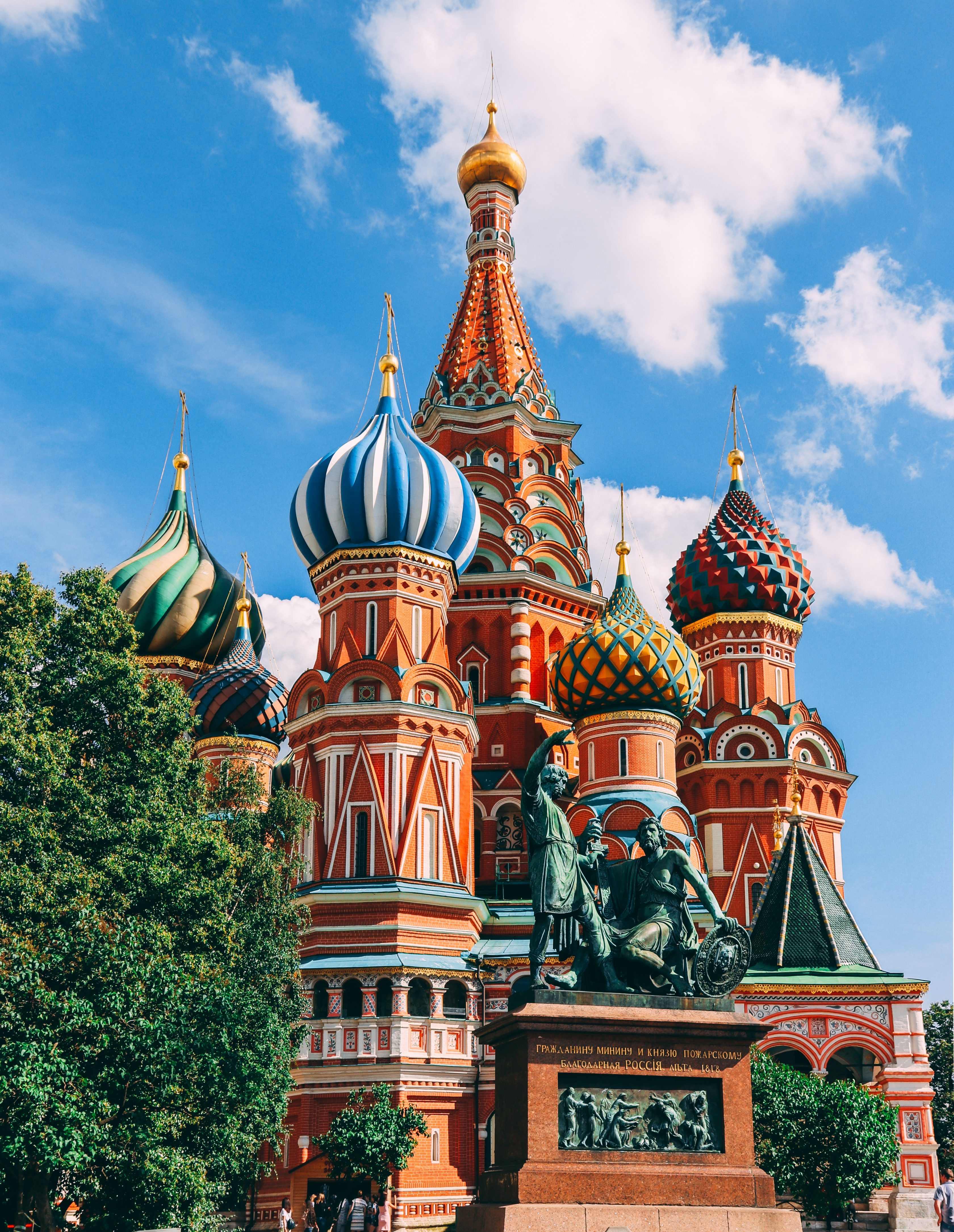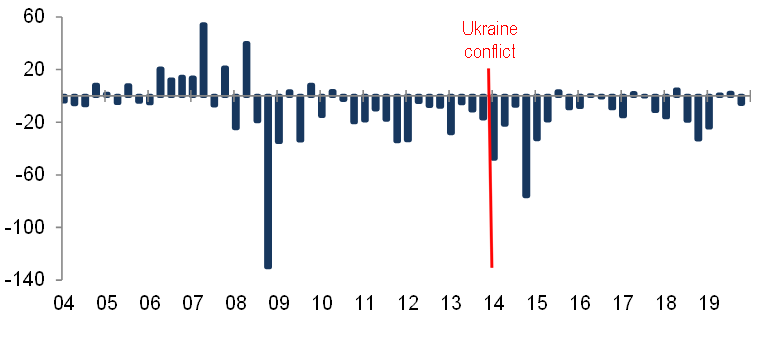The strong decrease in Russia’s current account surplus in 2019 has been confirmed. It declined to USD71bn (an estimated +4.2% of GDP) in 2019, down from USD114bn (+6.8% of GDP) in 2018. Merchandise exports dropped by -6% or -USD25bn to USD418bn in 2019. This compares to a strong +25% increase in the previous year. The main triggers for last year’s contraction were lower global oil prices (benchmark Brent at 64 USD/bbl on average in 2019 vs. 72 USD/bbl in 2018) and the oil output cuts agreed with OPEC and some other major oil producers (OPEC+), which sent oil and gas exports down by -9%. But the impact of new U.S. sanctions imposed on Russia in the course of last year, combined with slower global trade growth, also contributed to the weaker performance in 2019 as non-oil and gas exports decreased by -1% (vs. +14% in 2018). Meanwhile, merchandise imports expanded by just +2% or +USD6bn to USD255bn in 2019.
In 2020, we forecast the current account surplus to increase again to about +5% of GDP owing to three reasons: (i) We expect the average global oil price to edge up to 66 USD/bbl as a result of increased instability in the MIddle East. (ii) Russia’s exports should benefit from strengthening global trade growth in 2020, notably in USD terms (+2.6% vs. -1.9% in 2019). (iii) Oil output cuts agreed with OPEC+ will possibly be relaxed gradually in H2 2020.
The impact of foreign sanctions on financial flows to and from Russia has moderated. Private-sector net capital outflows from Russia moderated to just -USD27bn in 2019, down from -USD63bn in 2018 and well below the record highs in 2014 and 2008. The annual average over the last 10 years was -USD58bn (see Figure 1). This favorable development suggests that the impact of foreign sanctions on financial flows to and from Russia has declined. In 2020, we expect a similar amount of net capital outflows of around -USD30bn for the Russian private sector.


















